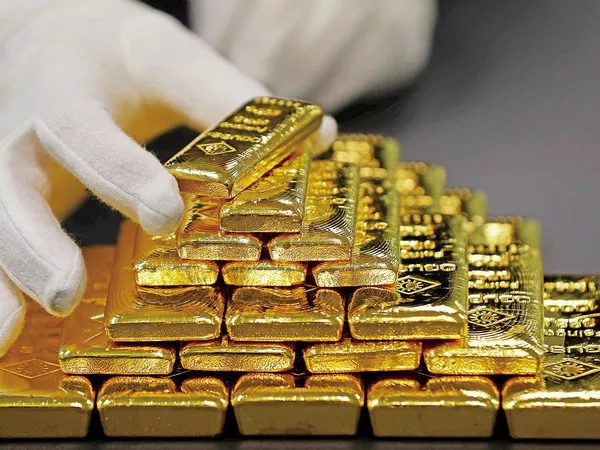Precious metals have held a timeless allure, captivating investors and enthusiasts alike with their unique properties and diverse uses. Among these, gold, silver, and platinum stand out as primary players in the world of precious metals. In this comprehensive guide, we’ll explore the distinctions between gold, silver, and platinum, shedding light on their characteristics, applications, and market dynamics.
I. Gold: The Timeless Elegance
1. Physical Properties:
Gold, with its unmistakable luster and yellow hue, is renowned for its corrosion resistance and malleability. These physical properties make gold a popular choice for jewelry and ornamental purposes, showcasing its timeless elegance.
2. Investment Appeal:
Beyond its aesthetic appeal, gold is a sought-after investment asset. Often considered a store of value, gold has historically served as a hedge against inflation and economic uncertainties. Investors often turn to gold to diversify portfolios and preserve wealth during turbulent market conditions.
3. Industrial Applications:
Gold’s conductivity and resistance to corrosion also find applications in various industries, including electronics and medical devices. While these applications contribute to demand, the primary drivers remain its cultural significance and investment appeal.
II. Silver: The Industrial Workhorse
1. Industrial Versatility:
Unlike gold, silver boasts exceptional conductivity and is widely used in industrial applications, particularly in the electronics and photography industries. Its reflective properties make it indispensable in mirrors, solar panels, and even in medical settings.
2. Investment and Jewelry:
Silver, like gold, serves as an investment asset and is used in jewelry. However, its lower price point compared to gold makes it more accessible to a broader range of investors. Silver’s dual role as an industrial and precious metal often influences its market dynamics.
3. Volatility and Market Perception:
Silver is known for its price volatility, influenced not only by investment demand but also by shifts in industrial demand. Market participants closely monitor economic trends and technological advancements that impact the industrial consumption of silver.
III. Platinum: The Industrial Powerhouse with Elegance
1. Rare and Durable:
Platinum, a dense and malleable metal, is rarer than both gold and silver. Its durability and resistance to tarnish make it a favored choice for crafting high-end jewelry and engagement rings.
2. Industrial Catalyst:
One of platinum’s standout features is its role as an industrial catalyst, particularly in the automotive industry. Platinum catalytic converters help reduce emissions in vehicles, highlighting its crucial role in environmental efforts.
3. Investment and Market Dynamics:
While platinum is considered a precious metal, its investment appeal is often overshadowed by gold and silver. The dynamics of the platinum market are heavily influenced by industrial demand, with investors keeping a keen eye on automotive trends and environmental regulations.
IV. Comparative Analysis: Understanding the Differences
1. Value and Rarity:
Gold, with its cultural significance and limited supply, often commands a higher value compared to silver and platinum. Silver, being more abundant, is generally priced lower, while platinum’s rarity positions it between gold and silver in terms of value.
2. Market Drivers:
The market dynamics of these precious metals are influenced by different factors. Gold’s value is closely tied to macroeconomic trends and geopolitical uncertainties. Silver’s market is more responsive to industrial demand and economic growth indicators, while platinum is deeply connected to the automotive industry and environmental policies.
3. Investment Considerations:
Investors should carefully consider their objectives and risk tolerance when choosing among these metals. Gold is often seen as a safe-haven asset, while silver’s dual role introduces both industrial and precious metal dynamics. Platinum, with its industrial focus, may appeal to those interested in environmental and technological trends.
V. FAQs on Gold, Silver, and Platinum:
Q1: What makes gold more valuable than silver and platinum?
A1: Gold’s higher value is attributed to its cultural significance, limited supply, and historical use as a store of value. These factors contribute to gold’s perception as a luxury asset and a hedge against economic uncertainties.
Q2: Why is silver more volatile than gold and platinum?
A2: Silver’s volatility is driven by its dual role as an industrial metal and a precious metal. Changes in industrial demand, economic trends, and technological advancements can lead to price fluctuations.
Q3: What industrial applications does platinum have?
A3: Platinum is widely used as an industrial catalyst, especially in catalytic converters for vehicles. Its applications extend to the chemical, electrical, and medical industries due to its durability and resistance to corrosion.
Q4: How do these metals fit into an investment portfolio?
A4: Gold is often included in portfolios as a hedge against inflation and market uncertainties. Silver offers both precious metal and industrial dynamics, appealing to a diverse range of investors. Platinum’s investment appeal is closely tied to its industrial applications, particularly in the automotive sector.
Q5: What factors influence the prices of these precious metals?
A5: Gold prices are influenced by macroeconomic trends and geopolitical uncertainties. Silver prices are responsive to industrial demand, economic growth, and technological trends. Platinum prices are influenced by automotive industry dynamics, environmental regulations, and overall industrial demand.

